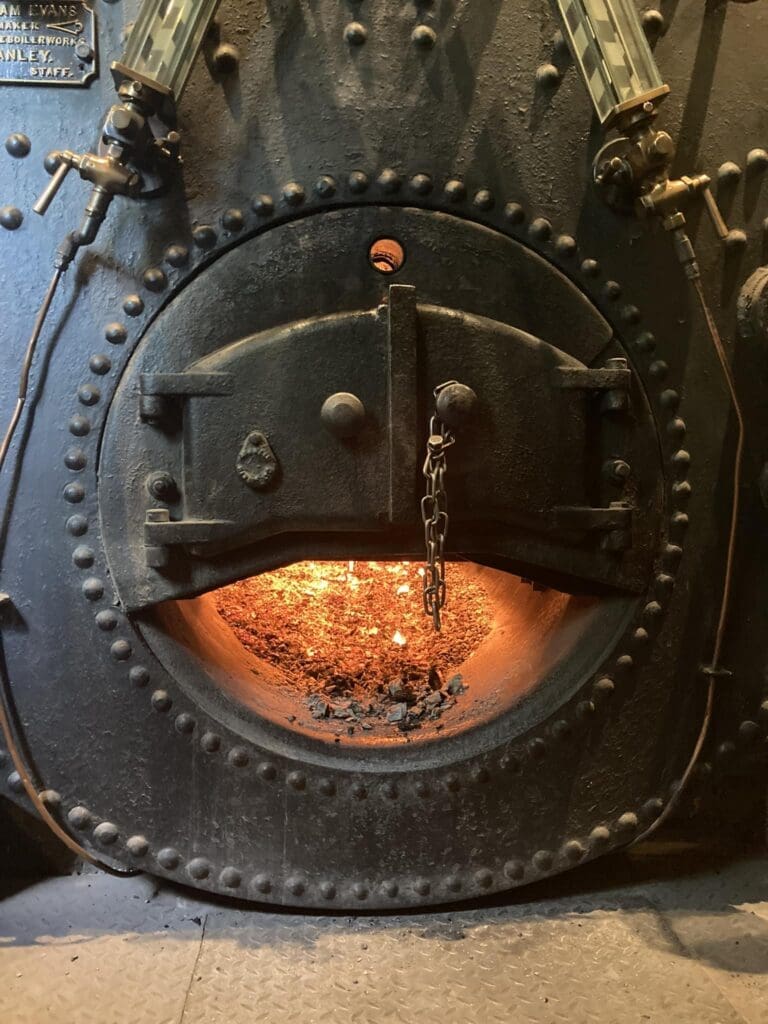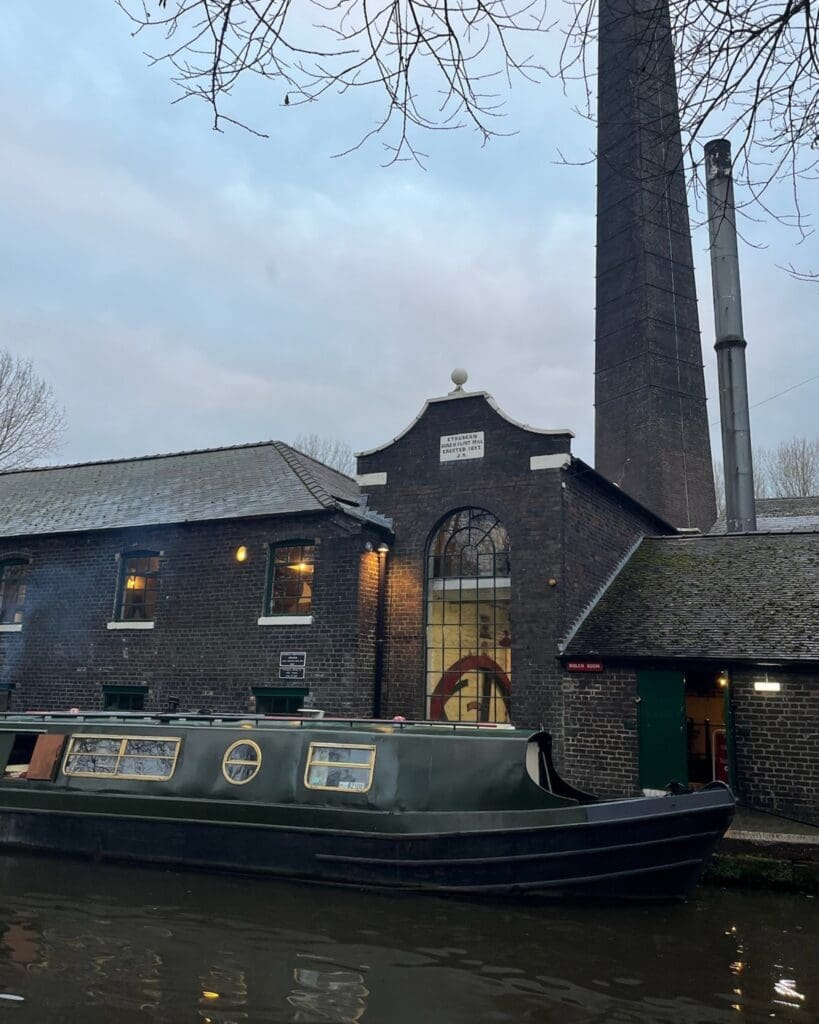An ‘in steam’ weekend is upcoming at Etruria Industrial Museum, Staffordshire’s “hidden gem” tucked into a junction of the Trent & Mersey and Caldon canals in Stoke-on-Trent. On 27th-28th July, its 1820s beam engine ‘Princess’ will be seen driving the world’s only operational steam-powered potter’s mill, a scheduled monument.
Opened in 1875, the mill produced the ground bone, flint and Cornish stone used to make the world-famous English porcelain better known as ‘bone china’. Once tea and coffee drinking had become popular in Europe in the 18th century, the race was on to find a home-grown version of the expensive Chinese porcelain imported for the upper classes. Chinese wares were made from kaolin (China clay), and because local clays were brown and unable to reproduce the famously translucent effect of porcelain, white clay was brought up from Devon and Cornwall. Eventually, manufacturers found a way of mixing kaolin and Cornish stone and then firing it to produce English porcelain.

Josiah Wedgwood, always the innovator, used China clay with flint from the Cornish coast to produce domestic porcelain which he then gave to Queen Charlotte. In an early stroke of marketing genius, Wedgwood called his creamy porcelain ‘Queen’s Ware’, and entire Wedgwood services soon became the must-have accessory across Europe, with Catherine the Great of Russia also a key customer.
Stoke-on-Trent is rightly known as a world centre for ceramics, and visitors to the area often make a beeline for surviving pottery sites such as Gladstone or Middleport potteries or for the unparalleled ceramics collection at the Potteries Museum in Hanley, but just a stone’s throw away the Etruria Industrial Museum represents the ‘business end’ of pottery-making. Without the ground raw materials produced by mills like these, there would have been no pottery industry at all.

For flint or bone to be ‘calcined’ with coal, it needs to be roasted at 1,000 degrees for eight to ten hours, then ground to a fine powder. The museum’s pan room houses ten pans where calcined material was loaded and water added, with runners pushed around by paddles to tumble and grind the materials. The boiler room houses a hand-stoked Cornish boiler built in 1903, while ‘Princess’, the beloved 1820s beam engine, is a double-acting condensing rotative engine made to James Watt’s design. The museum’s boiler room, engine room, pan room, crushing room and kilns are all open to the public, as are the visitor centre, café and outbuildings including a working blacksmith’s forge.
The history of the museum is, of course, inextricably connected to canal history. The Caldon Canal connects Etruria with the Staffordshire Moorlands and the towns of Leek and Uttoxeter and is replenished by Rudyard Lake as well as Stanley and Knypersley pools. Meanwhile, the Trent & Mersey from the other side of the Harecastle Tunnel to the summit lock at Eturia forms the highest section of the canal. The depth of the lock has been increased several times due to mining subsidence, which can be seen in the capstones in the lock wall. Purported to be the third deepest lock on the system, the lock has operated since the mid-1770s and is still used by some 5000 boats a year.

Adjacent to the site is a statue of James Brindley, the Buxton-born millwright who subsequently became synonymous with innovative engineering across mills, collieries and of course canals, having designed and built the Bridgwater Canal as well as surveying and designing both the Trent & Mersey and the Caldon. Entirely volunteer-run, Etruria Industrial Museum is proud to be called “Staffordshire’s hidden gem”, keeping important industrial and canal heritage alive for generations to come. www.etruriamuseum.org.uk





